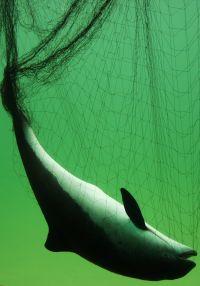COP10 Outcome: Mitigation of Gillnet Fishing Bycatch
 Bonn, 12 March 2012 - The Conference of Parties (COP) to CMS passed a resolution on reducing the impact of gillnet fisheries, because of the grave affects on marine life, including threatened migratory species listed in the Appendices of CMS.
Bonn, 12 March 2012 - The Conference of Parties (COP) to CMS passed a resolution on reducing the impact of gillnet fisheries, because of the grave affects on marine life, including threatened migratory species listed in the Appendices of CMS.
This widely used fishing method has so far received relatively little international attention when it comes to its impacts on migratory species and the assessment of mitigation methods. It is clear, however, that bycatch in gillnet fisheries has considerable impact on the populations of these long-lived species.
In Resolution 10.14, Parties recognize the magnitude of this problem and call on each other to assess the risk of bycatch for migratory species in their territorial waters, and to identify and improve mitigation measures.
Prior to the COP, an assessment of bycatch in gillnet fisheries was commissioned by CMS and conducted by Sextant Technology Ltd. from New Zealand. One of the findings was that gillnet fisheries are in fact too poorly documented for a detailed analysis to be produced or recommendations made. The study identified the twenty worst affected areas, as well as the forty species most exposed to risk from gillnet fishing. These included sea birds as well as cetaceans and sirenians, seals, sea otters, sea turtles and sharks. The assessment concluded that further research was urgently needed to be able to design effective mitigation measures and prioritize their implementation.
In order to close this gap, the Conference of the Parties instructed the Scientific Council to develop terms of reference for studies identifying the degree of interaction between gillnet fisheries and CMS-listed species. The Scientific Council is further called to identify the most effective mitigation techniques for each particular set of circumstances, which should build upon and complement existing initiatives within the fisheries sector, and which should be reviewed regularly in order to evaluate their effectiveness and any effects on other taxa.
Last updated on 20 August 2015


